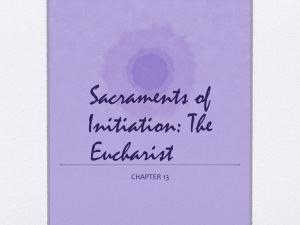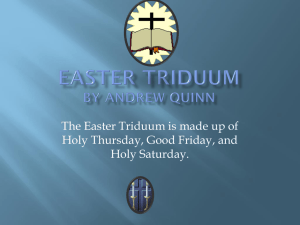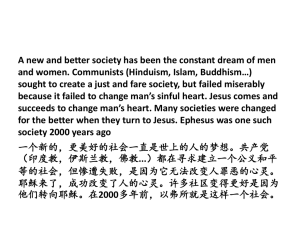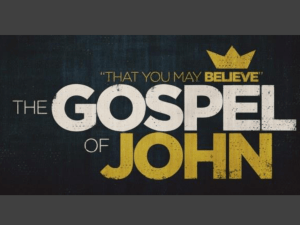1. Eucharist - 9RE-EP
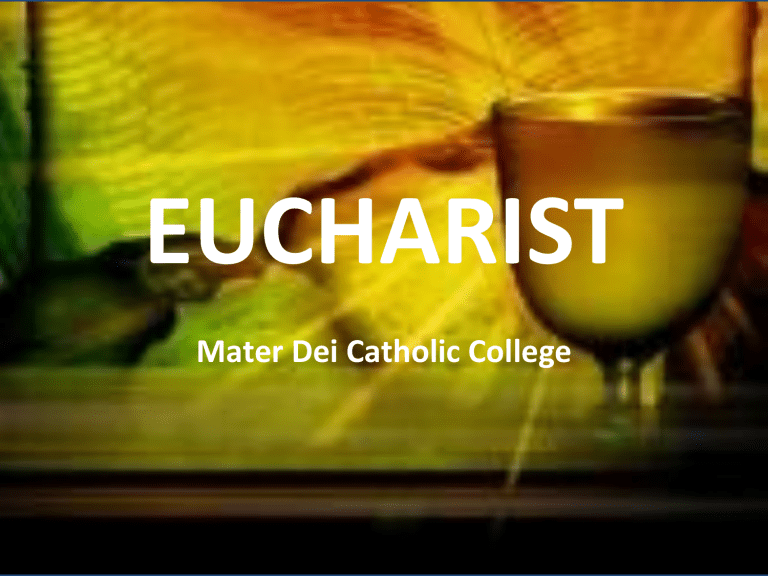
EUCHARIST
Mater Dei Catholic College
UNIT OVERVIEW
This unit focuses on the Catholic Eucharist with reference to:
ways in which selected individuals and organisations reach out to Australians on the fringe of society;
ways in which the Eucharist challenges Catholics to reach out to others, with reference to key rituals, symbols and prayers from the Mass;
ways in which Jesus reached out to others during his ministry, with reference to key passages;
and ways in which students can reach out to those on the fringe in their everyday lives.
The Eucharist
The Eucharist has been transformed over time from a simple meal of praise and thanksgiving in the ‘Last Supper’ (Where
Jesus showed his disciples how to memorialise his actions into the future) to a significant and symbolic, weekly celebrated Christian (Catholics say mass) Ritual.
The Eucharist
The Last Supper was the final meal that Jesus shared with his disciples before he was crucified.
He said and did symbolic things that have evolved from Early
Christian Tradition.
Jesus acknowledged that when the disciples needed spiritual support, they should come together and ‘break bread’ in his honour.
“When you eat this bread and drink this cup, you proclaim my name”
Christian denominations believe this symbolic action is memorial and praise.
The Catholic group believe that the bread literally represents the body of Jesus, and the wine that represents Jesus’ blood.
This literal representation is called TRANSUBSTANTIATION
The Eucharist
The transformation occurs when the Priest, during Eucharist
Prayer blesses and transforms the bread and wine into the body and blood of Christ. Elevating the mundane, to the spiritual.
Jesus, friend of the outcast
Complete the TB Resource:
- Jesus, friend of the outcast
- Outcasts in Jesus’ Time
On The Fringe Of
Australian Society?
What groups make up the fringe of
Australian Society?
How does society respond or acknowledge these individuals or groups?
- Political Responses
- Religious/Faith Responses
- Social Welfare Groups
How do individuals/groups respond to these needs ?
On the Fringe
Complete the Google
Doc:
On the Fringe
Eucharist:
Sacred:
Memorial:
Sacrifice:
What does it mean?
Key Terminology for Eucharist
Readings – taken from Old and New Testament
Vestments – robes the Priest wears during Mass
Candles – burn on the Altar during Mass
Tabernacle – place where consecrated hosts (already blessed) are placed for storage
Host – unleavened wheaten bread
Transubstantiation – the conversion of the bread and wine into the body and blood of Jesus Christ
Liturgy of the Word – Readings, Responsorial Psalm, Gospel, Homily
Eucharist – Also called the Mass, the word means Thanksgiving
Salvation – the reason Jesus died on the cross for Christians – to be ‘saved’
Chalice – holds the wine
Paten/Ciborium - holds the hosts
Passover – the Old Testament, Jewish event that Jesus and his disciples were celebrating with the
Last Supper
Genuflect – when you kneel before the tabernacle when the light is lit, it indicates the presence of the blessed sacrament.
Penitential Rite – the words we recite during the Mass to ask for forgiveness and healing from God.
Consecration – when the Priest blesses the bread and wine and the Holy Spirit changes it into the body and blood of Christ.
Meaning of Eucharist
Complete the TB Resource:
- Meaning of Eucharist
- Eucharist is…
The Eucharist is About
Remembrance
In the Eucharist we remember…
• Jesus Christ – his humanity and divinity
• His final meal with his disciples before he died – ‘The Last
Supper’
• His message – his words, parables, ethics and teachings.
• How humble yet spiritual a meal can be = life giving
• The sacrifice Christ made for us in dying on the cross
• The forgiveness Christians now experience through his suffering = Salvation. This is one of the key beliefs of
Christianity, it allows believers to enjoy the promise of eternal life with God in heaven, if they live a good life on earth.
The Eucharist is About
Remembrance
Why is this important?
• Memories connect our past and present, and guide our future.
• If a person forgot his/her memories or stories they would lose direction and purpose.
• If we lose the power to nurture our own memories and create our own values we can be too easily influenced by negatives.
• To re-member, means to put one’s self, life and memories back together.
• Unless we re-member our life becomes fragmented (we lose our direction towards the truth), as Christians it is important to recall the life of Christ, to reconnect with his message and his life’s purpose.
• Participating in the gift of the ‘Eucharist’ gives life to Christians it is a key ritual that allows us to continually have life in Christ.
The Eucharist is About
Remembrance
Questions…
1. Why is the Eucharist one of the most important experiences for Christians to have as often as possible?
Think spiritual nourishment, remembrance, Jesus qualities….
2. Why does Jesus wash his disciples feet when he visits them for dinner? Why is this significant for us?
Think purity, hygiene, diseases, humble servant, getting down to their level, love of others….
Eucharist – A Memorial
Complete the TB Resource:
- Eucharist – A Memorial
Eucharist – Sharing a Meal
Nancy Gibbs, Time Magazine, 2006
Close your eyes and picture Family Dinner. June Cleaver is in an apron and pearls, Ward in a sweater and tie. The napkins are linen, the children are scrubbed, steam rises from the green-bean casserole, and even the dog listens intently to what is being said. This is where the tribe comes to transmit wisdom, embed expectations, confess, conspire, forgive, repair. The idealized version is as close to a regular worship service, with its litanies and lessons and blessings, as a family gets outside a sanctuary.
There is something about a shared meal--not some holiday blowout, not once in a while but regularly, reliably--that anchors a family even on nights when the food is fast and the talk cheap and everyone has someplace else they'd rather be. And on those evenings when the mood is right and the family lingers, caught up in an idea or an argument explored in a shared safe place where no one is stupid or shy or ashamed, you get a glimpse of the power of this habit and why social scientists say such communion acts as a kind of vaccine, protecting kids from all manner of harm.
In fact, it's the experts in adolescent development who wax most emphatic about the value of family meals, for it's in the teenage years that this daily investment pays some of its biggest dividends. Studies show that the more often families eat together, the less likely kids are to smoke, drink, do drugs, get depressed, develop eating disorders and consider suicide, and the more likely they are to do well in school, delay having sex, eat their vegetables, learn big words and know which fork to use. "If it were just about food, we would squirt it into their mouths with a tube," says Robin Fox, an anthropologist who teaches at Rutgers University in New Jersey, about the mysterious way that family dinner engraves our souls. "A meal is about civilizing children. It's about teaching them to be a member of their culture."
Back in the really olden days, most meals were informal, a kind of rolling refueling; often only the men sat down. Not until the mid--19th century did the day acquire its middle-class rhythms and rituals; a proper dining room became a Victorian aspiration.
When children were 8 or 9, they were allowed to join the adults at the table for instruction in proper etiquette. By the turn of the century, restaurants had appeared to cater to clerical workers, and in time, eating out became a recreational sport. Family dinner by the 1950s: Mum cooked, Dad carved, son cleared, daughter did the dishes.
All kinds of social and economic and technological factors then conspired to shred that tidy picture to the point that the frequency of family dining fell about a third over the next 30 years. With both parents working and the kids shuttling between sports practices or attached to their screens at home, finding a time for everyone to sit around the same table, eating the same food and listening to one another, became a
.
quaint kind of luxury. Meanwhile, the message embedded in the microwave was that time spent standing in front of a stove was time wasted.
But something precious was lost, when cooking came to be cast as drudgery and meals as discretionary. Food comes so easily to us now, he says, that we have lost a sense of its significance. When we had to grow the corn and fight off predators, meals included a serving of gratitude. We have reduced eating to sitting alone and shoveling it in. There is no ceremony in it. Or at least there wasn't for many families until researchers in the
1980s began looking at the data and doing all kinds of regression analyses that showed how a shared pot roast could contribute to kids' success and health.
Researchers speculate that maybe kids who eat a lot of family meals have less unsupervised time and thus less chance to get into trouble. Families who make meals a priority also tend to spend more time on reading for pleasure and homework. A whole basket of values and habits, of which a common mealtime is only one, may work together to ground kids. The 2005 CASA study found that the number of adolescents eating with their family most nights has increased 23% since 1998..
Beyond promoting balance and variety in kids' diets, meals together send the message that citizenship in a family entails certain standards beyond individual whims. This is where a family builds its identity and culture. Legends are passed down, jokes rendered, eventually the wider world examined through the lens of a family's values. In addition, younger kids pick up vocabulary and a sense of how conversation is structured. They hear how a problem is solved, learn to listen to other people's concerns and respect their tastes.
"A meal is about sharing," says Doherty. "I see this trend where parents are preparing different meals for each kid, and it takes away from that. The sharing is the compromise. Not everyone gets their ideal menu every night." Doherty heard from a
YMCA camp counselor about the number of kids who arrive with a list of foods they won't eat and who require basic instruction from counselors on how to share a meal.
"They have to teach them how to pass food around and serve each other. The kids have to learn how to eat what's there. And they have to learn how to remain seated until everyone else is done."
Parents sometimes seem a little too eager to be rejected by their teenage sons and daughters, suggests Miriam Weinstein, a freelance journalist who wrote The Surprising
Power of Family Meals. "We've sold ourselves on the idea that teenagers are obviously sick of their families, that they're bonded to their peer group," she says. "We've taken it to an extreme. We've taken it to mean that a teenager has no need for his family.
And that's just not true." She scolds parents who blame their kids for undermining mealtime when the adults are co-conspirators. "It's become a badge of honor to say, 'I have no time. I am so busy,'" she says. "But we make a lot of choices, and we have a lot more discretion than we give ourselves credit for," she says. Parents may be undervaluing themselves when they conclude that sending kids off to every conceivable extracurricular activity is a better use of time than an hour spent around a table, just talking to Mum and Dad.
It turns out that when kids help prepare a meal, they are much more likely to eat it, and it's a useful skill that seems to build self-esteem. Research on family meals does not explore whether it makes a difference if dinner is with two parents or one or even whether the meal needs to be dinner. For families whose schedules make evenings together a challenge, breakfast or lunch may have the same value. So pull up some chairs. Lose the TV. Let the phone go unanswered. And see where the moment takes you.
Nancy Gibbs, Time Magazine, 2006
Sharing a Meal
What is the significance of sharing a meal?
How are we nourished physically, mentally, emotionally, spiritually from the action of sharing a meal?
How does the Eucharist challenge us to reach out to others?
Sharing a Meal
Relate the idea of ‘meal’ to the personal experiences of the students.
The importance of sharing a meal, gathering and relating to one another
Link cultural experiences of preparing - sharing meals – relate to the school’s ‘Multicultural Day’ – School’s Feast Day – where
Eucharist is shared (Whole School Mass).
Eucharist is spiritual food for our religious (faith) journey
When in your life have you been fed? (physically, spiritually, emotionally..)
Where do you get your nourishment from? Why? How? How often? Consider Catholic Sacraments
If we have to nourish our bodies everyday for survival, how do we nourish our spiritual dimension for our faith to be enriched?
Being Living Eucharist: How can we be ‘living Eucharist to others’
Liturgy of the Eucharist – 4 Rites
Basic Structure of the Eucharist
Complete the TB Resource:
- Basic Structure of the
Eucharist
Elements of the Mass
Complete the TB Resource:
- Elements of the Mass
The New Structure of the Mass
What are the new changes?
How do they “give life” and meaning to the Mass?
The New Structure of the Mass
Old Text
‘The Lord be with you”
R: “And also with you”
New Text
“The Lord be with you”
R: “And with your spirit”
In the Penitential Act
“I confess to almighty God…that I have sinned through my own fault..in what I have done and in what I have failed to do. And I ask blessed Mary, ever virgin,…”
“I confess to almighty God…that I have
sinned greatly…in what I have done and in what I have failed to do, through my fault, through my fault, through my most grievous
fault. Therefore I ask blessed Mary, ever-
Virgin…”
In the Gloria
“Glory to God in the highest, and peace to
His people on earth.
Lord God, heavenly King, almighty God and
Father,
We worship You, we give You thanks, we praise You for Your Glory
“Glory to God in the highest, and on earth peace to people of good will.
We praise you, we bless you, we adore you, we glorify you, we give you thanks for your great glory
The New Structure of the Mass
Old Text
In the Nicene Creed:
“We believe in one God…maker of Heaven and earth, of all that is seen and unseen”
“We believe in one Lord…begotten, not made, one in being with the Father”
New Text
“I believe in one God…maker of Heaven and earth, of all things visible and invisible”
“I believe in one Lord…begotten, not made, consubstantial with the Father”
“Let us give thanks to the Lord our God”
R: “It is right to give Him thanks and praise”
“Let us give thanks to the Lord our God”
R: “It is right and just”
“Holy, Holy, Holy Lord, God of power and might, Heaven and earth are full of your glory…”
“Holy, Holy, Holy Lord, God of hosts,
Heave and earth and full of your glory…”
“This is the cup of my blood, the blood of the new and everlasting covenant. It will be shed for you and for all so that sins may be forgiven”
“For this is the chalice of my blood, the blood of the new and eternal covenant, which will be poured out for you
and for many, for the forgiveness of sins”
“Lord I am not worthy to receive you, only say the word and I shall be healed”
“Lord, I am not worthy that you should enter under my roof, but only say the word and my soul shall be healed”
Jesus’ Ministry
Complete the TB Resource:
- Jesus’ Ministry
- How would people on the fringes of Australian society respond today if
Jesus were here helping them?
Last Supper
Complete the TB Resource:
- Last Supper
The Lord’s Last Supper
Complete the TB Resource:
- The Lord’s Last Supper
Celebrating The Eucharist
Complete the TB Resource:
- Celebrating the Eucharist
Sacrifice
Complete the TB Resource:
- Sacrifice
Eucharist as Sacrifice
Complete the TB Resource:
- Eucharist as Sacrifice
History of the Eucharist
Complete the TB Resource:
- History of the Eucharist
Celebration of the Eucharist in the Early Church
Complete the TB Resource:
- Celebration of the Eucharist in the Early Church
- History of Eucharist 2
The Road to Emmaus
Complete the TB Resource:
- The Road to Emmaus
Living the Eucharist
Complete the TB Resource:
- Living the Eucharist
- St. Pio of Pietrelcina (Padre
Pio)
- Feastday: September 23
- 1887 - 1968
- Canonized By: Pope John Paul
II
Living the Eucharist
Planning for a
Eucharistic Celebration
Complete the TB Resource:
- Planning for a Eucharistic Celebration
Symbols and Symbolic Actions
Complete the TB Resource:
- Symbols and Symbolic Actions
- Symbolism of Bread and Wine
Jesus Feeds Five Thousand
Complete the TB Resource:
- Jesus Feeds Five Thousand


